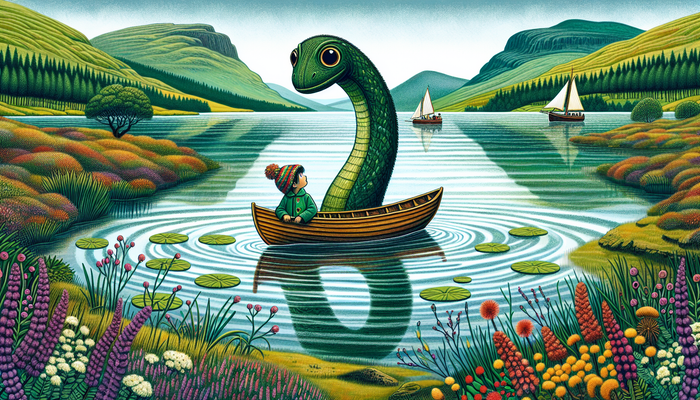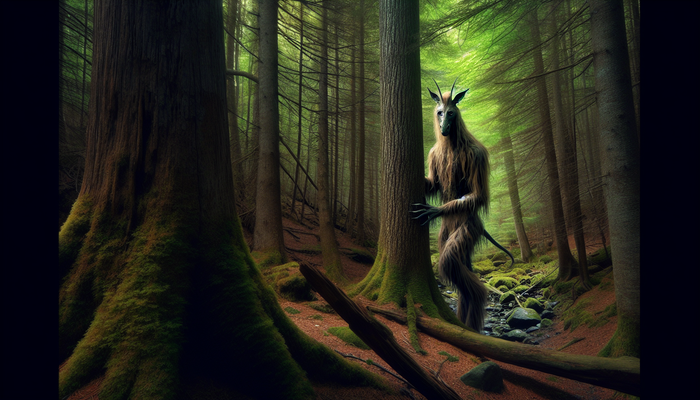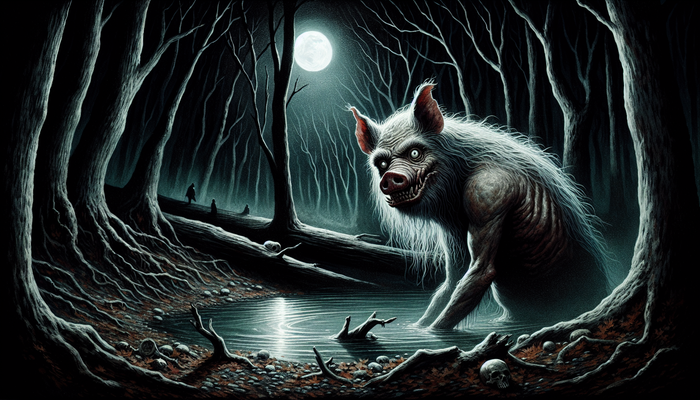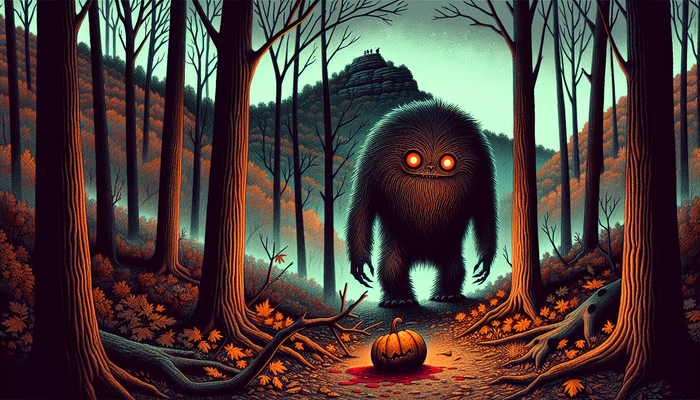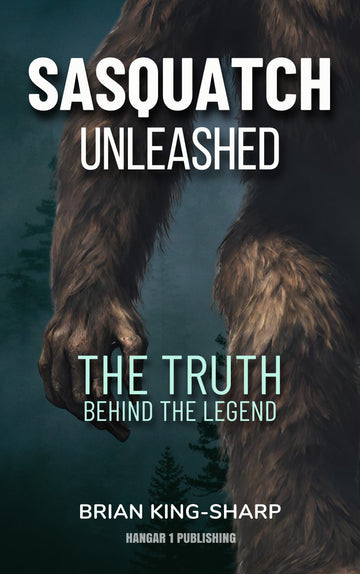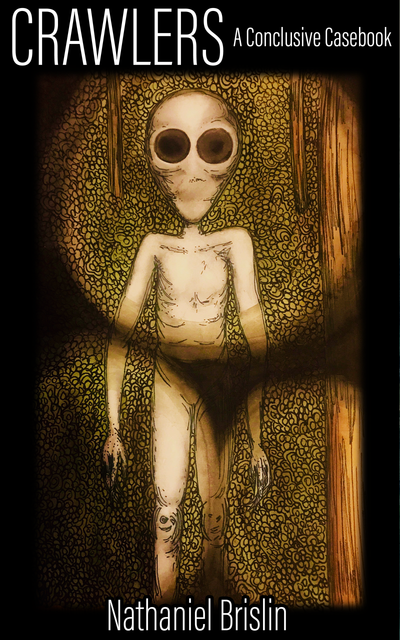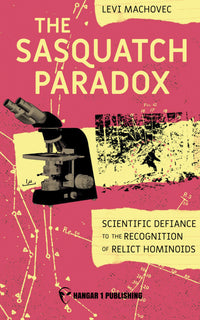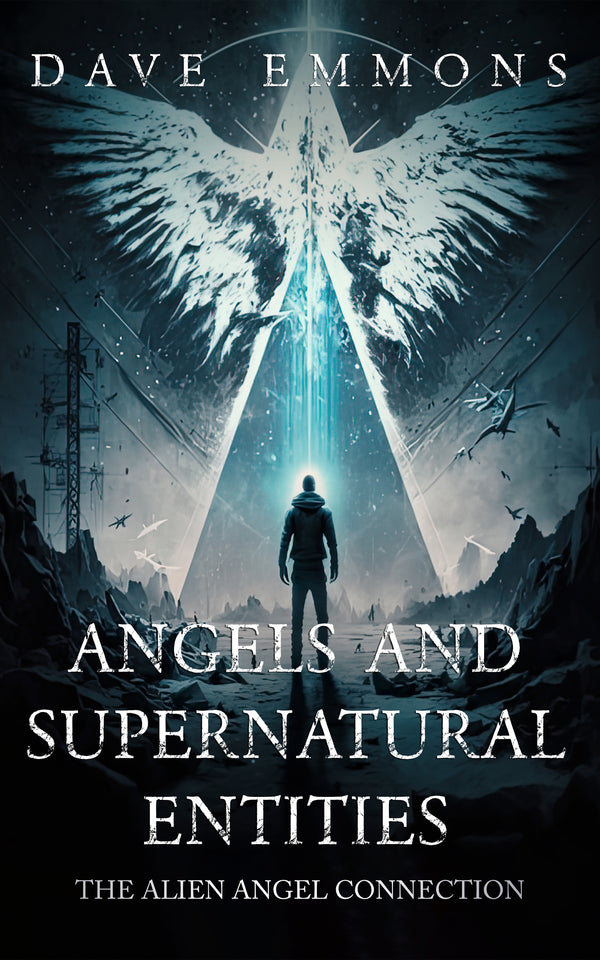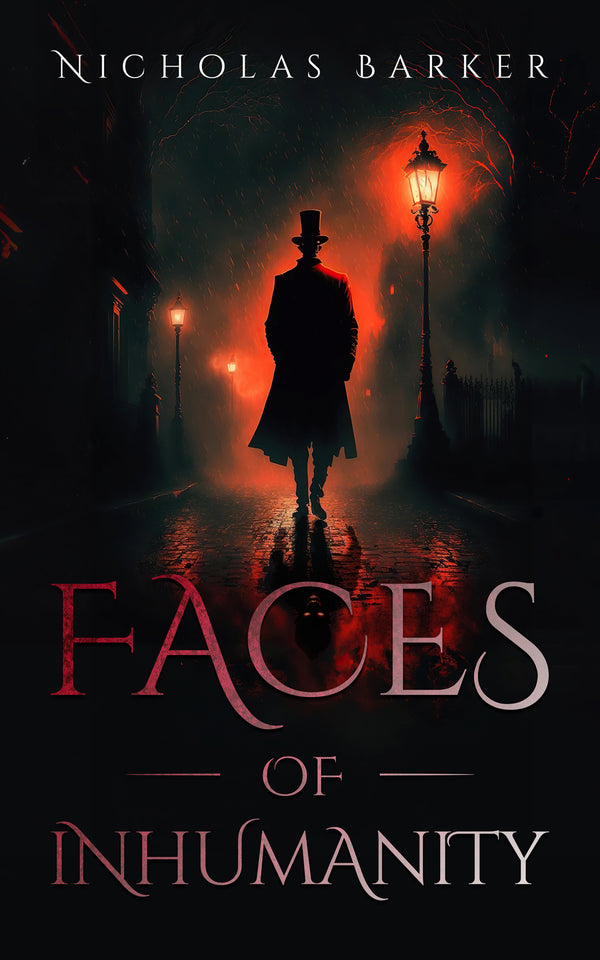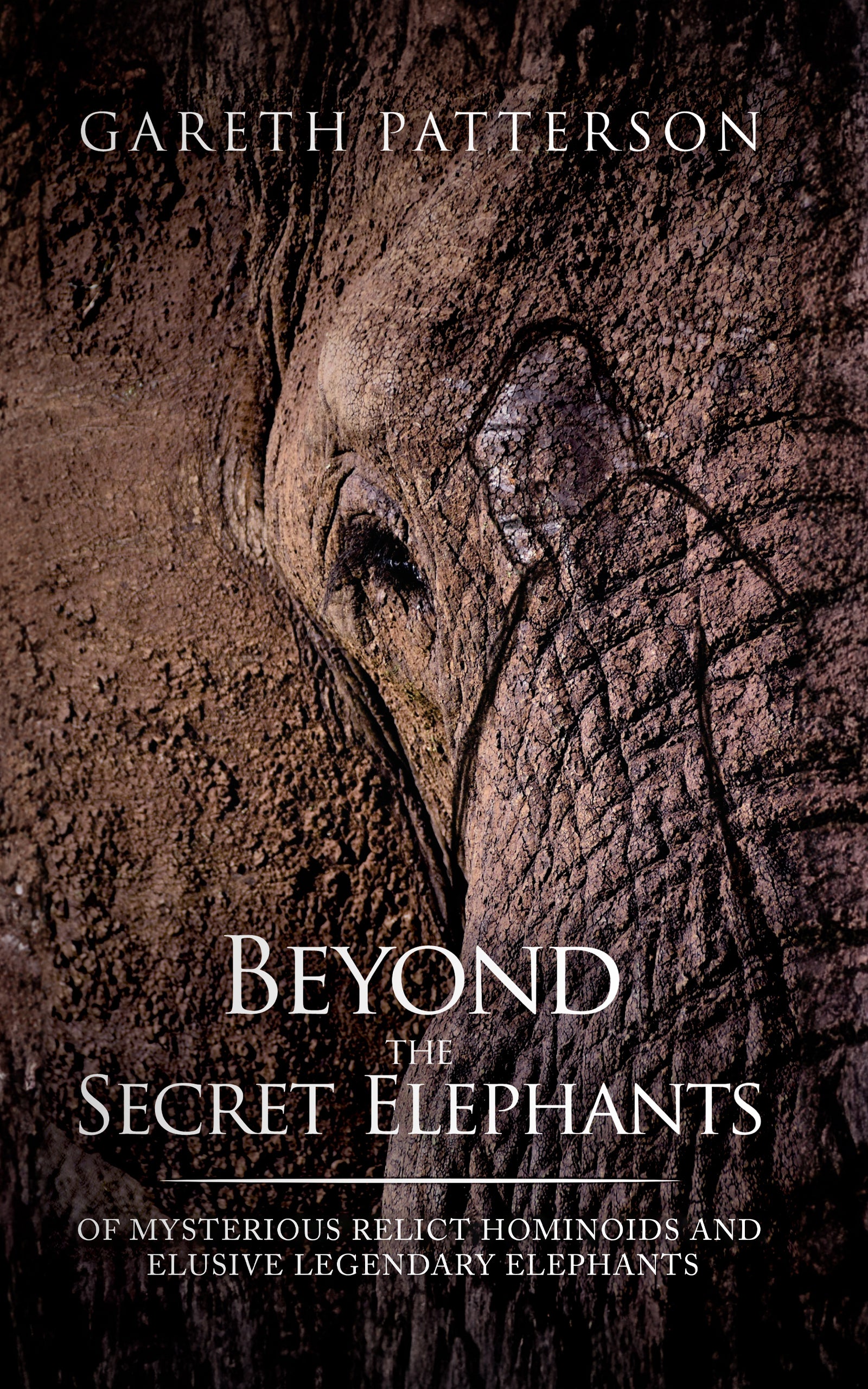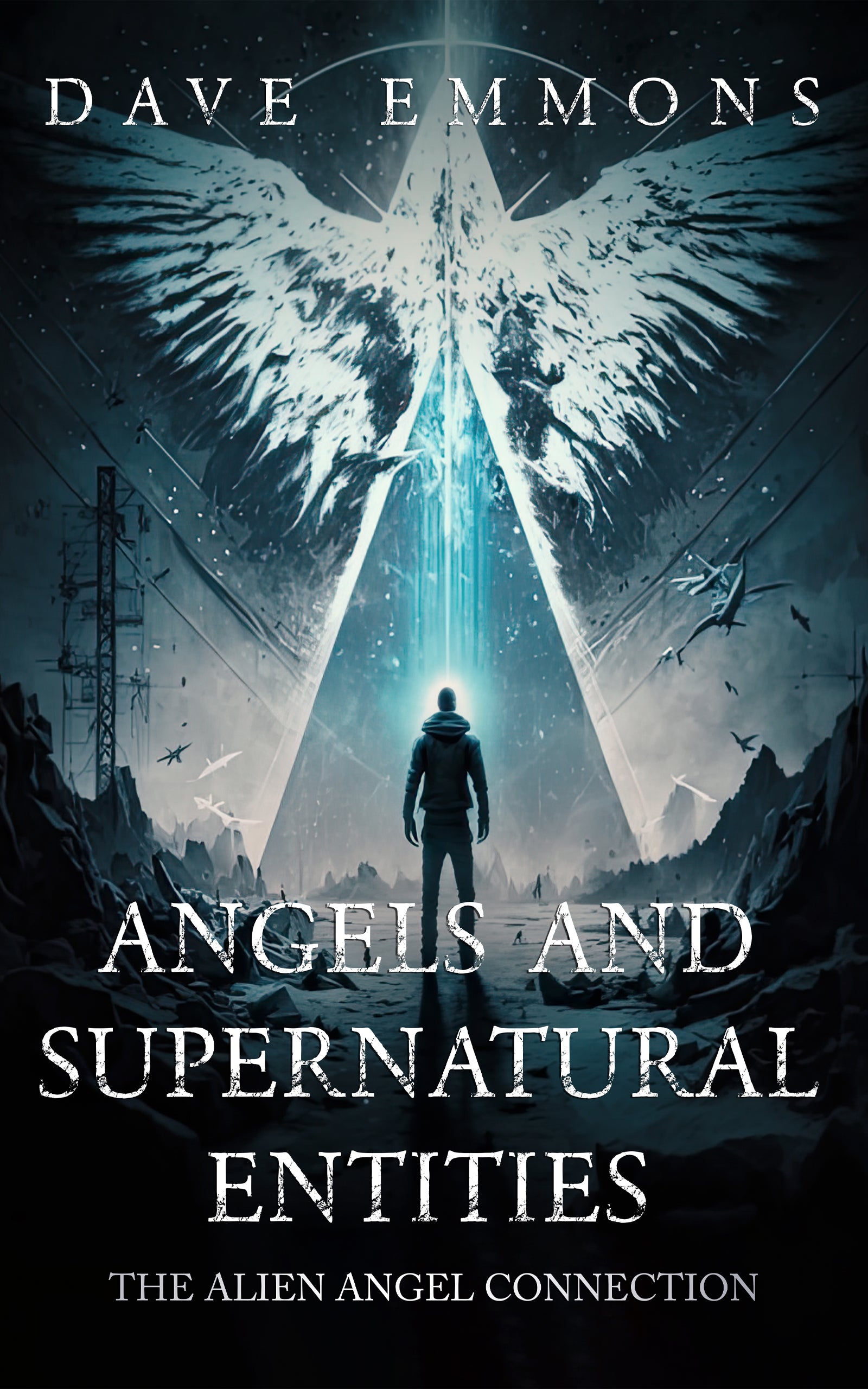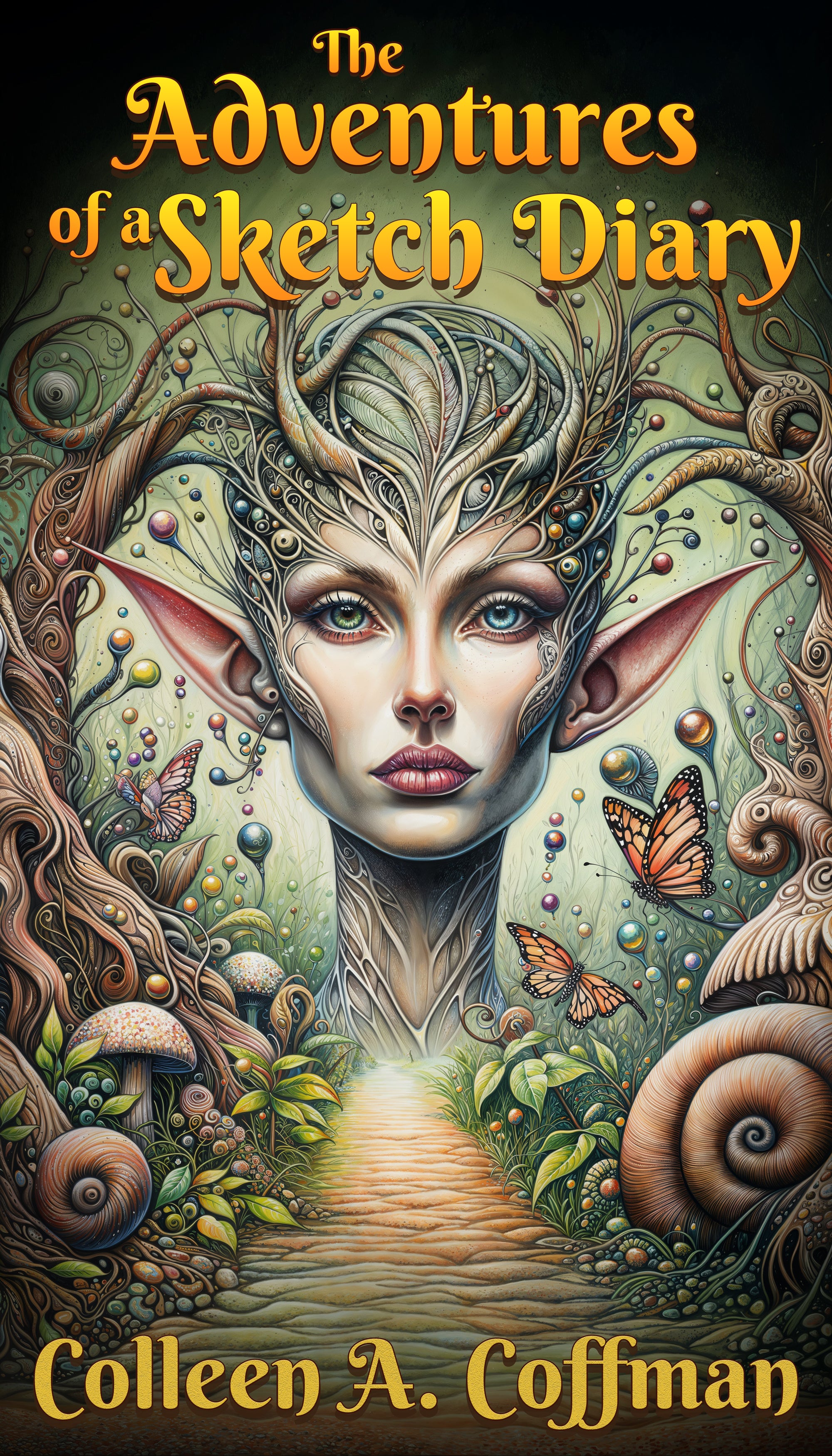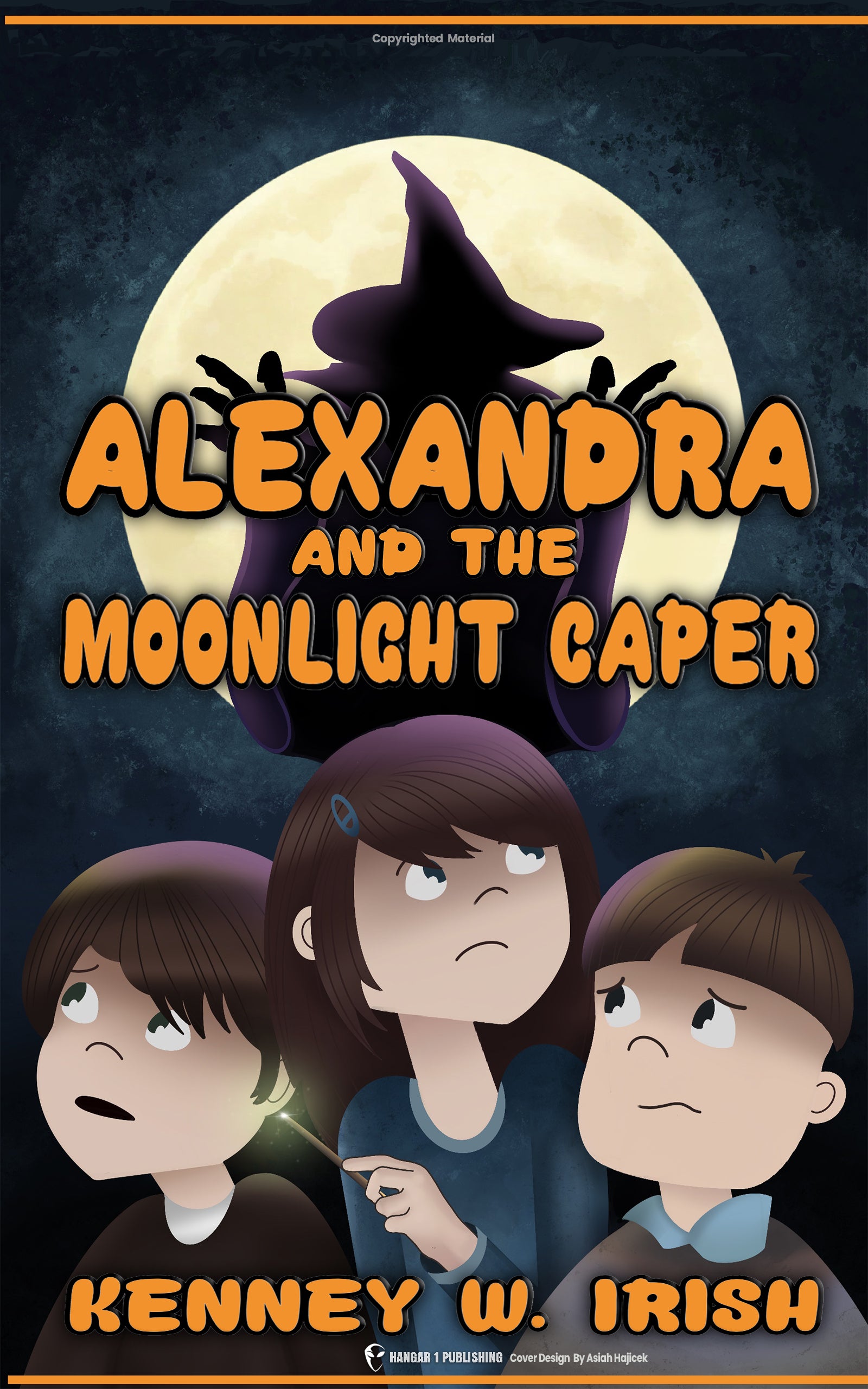Discover the Fascinating World of Middle Eastern Cryptids
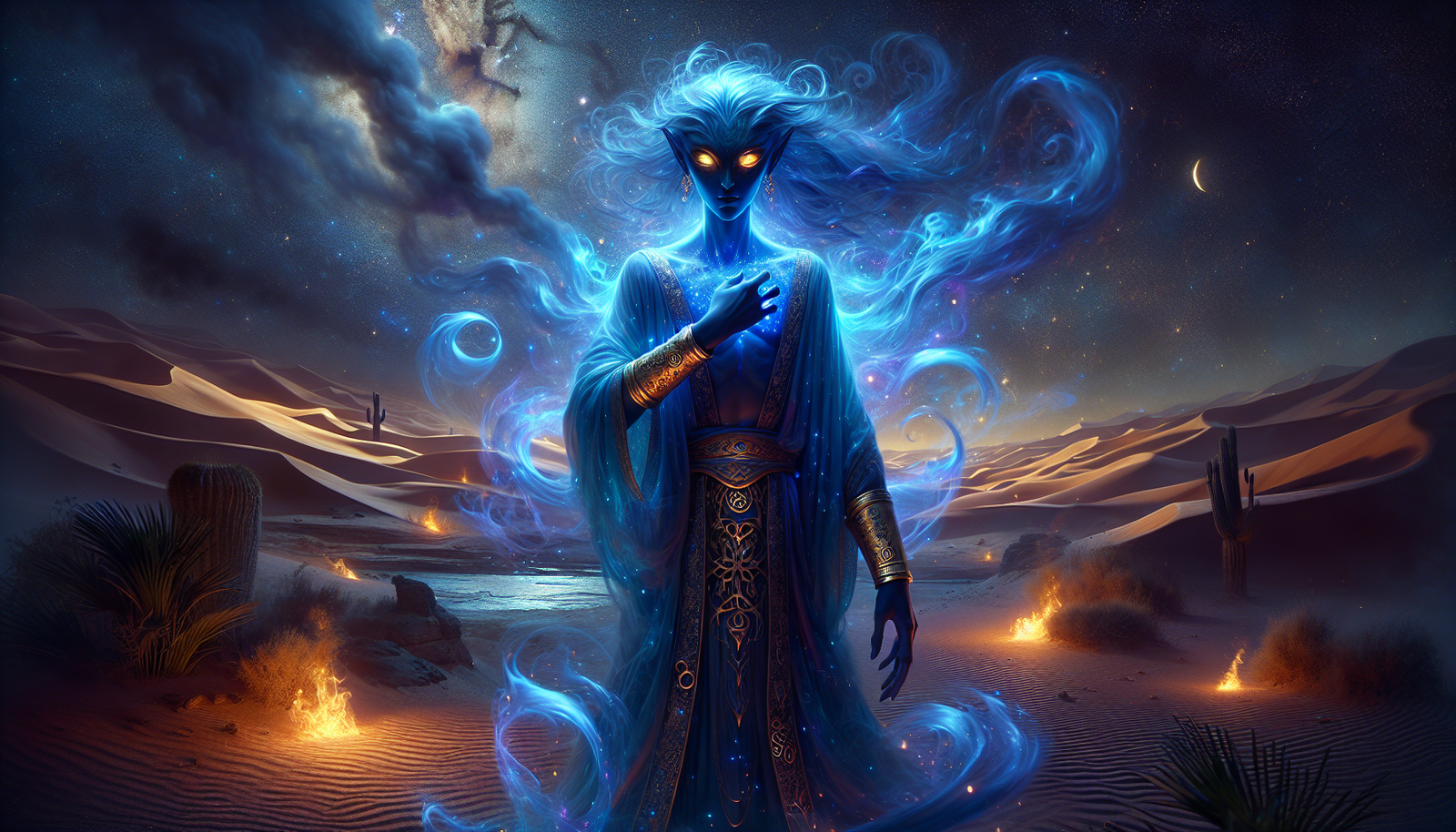
By Dr. Elizabeth Harper, Cryptozoologist
The Jinn: Spirits of Fire and Mischief
At the heart of Middle Eastern folklore lie the jinn, supernatural beings created from smokeless fire. Unlike ghosts or demons, jinn occupy a unique space in the pantheon of mythical creatures. They possess free will, much like humans, and can choose to be benevolent or malevolent.
The concept of jinn predates Islam, with roots in pre-Islamic Arabian mythology. However, they gained widespread recognition through their mention in the Quran, which describes them as one of three sapient creations of God, alongside humans and angels.
Jinn are master shape-shifters, capable of assuming various forms—from animals to humans to inanimate objects. This ability to blend in with their surroundings adds to their mystique and unpredictability. You might be chatting with a friendly stranger one moment, only to realize you've been conversing with a jinn the next.
Their dual nature makes jinn fascinating subjects of folklore. Some tales depict them as helpful beings, granting wishes or offering guidance to lost travelers. Others portray them as tricksters or even malevolent entities, leading humans astray or causing misfortune.
The cultural significance of jinn cannot be overstated. They embody the complexities of human nature, serving as a mirror for our own moral ambiguities. The concept of jinn has also influenced literature and popular culture far beyond the Middle East. From the genie in "Aladdin" to more nuanced portrayals in contemporary fantasy, jinn continue to capture our imagination.
One particularly intriguing aspect of jinn lore is the belief that they can possess humans or form romantic relationships with them. These ideas have given rise to countless stories and superstitions, some of which persist to this day. In parts of the Middle East, it's not uncommon for people to attribute inexplicable events or behaviors to jinn influence.
The enduring popularity of jinn in folklore and modern media speaks to their versatility as literary devices. They can be used to explore themes of temptation, power, and the consequences of one's choices. Whether portrayed as wish-granting genies or complex, morally ambiguous beings, jinn remain an integral part of Middle Eastern cultural heritage.
The Roc: The Giant Bird of Prey
Soaring through the skies of Middle Eastern legend is the Roc, a bird of such immense proportions that it can carry off elephants in its talons. This colossal creature has captured the imagination of storytellers and adventurers for centuries, appearing in tales from "One Thousand and One Nights" to the voyages of Marco Polo.
The Roc's origins are as vast as its wingspan, with influences stretching from Arabian folklore to Persian mythology. Some scholars suggest that the legend may have been inspired by real-life encounters with large birds, such as the now-extinct elephant birds of Madagascar or exaggerated tales of eagles.
In the adventures of Sinbad the Sailor, the Roc plays a pivotal role. During his second voyage, Sinbad finds himself on an island where he discovers an enormous egg—the egg of a Roc. The bird's appearance is described as blocking out the sun, its wings creating gusts of wind strong enough to capsize ships.
The Roc serves as more than just a fearsome predator in these tales. It symbolizes the awesome power of nature and the mysteries that lie beyond human understanding. The creature's ability to traverse vast distances and its domain over the skies represent the allure of exploration and the dangers that await those who venture into the unknown.
Interestingly, the Roc has parallels in other cultures. The Persian Simurgh, the Indian Garuda, and even the Greek Phoenix share similarities with this legendary bird. This cross-cultural presence speaks to a universal human fascination with the idea of giant, mythical avians.
The Roc's influence extends beyond folklore into the realm of cartography and natural history. Medieval maps often featured illustrations of the Roc, placing it in unexplored regions of the world. Even respected scholars of the time, such as Marco Polo, wrote of the Roc as if it were a real creature, albeit one they had never personally encountered.
In modern times, the Roc continues to inspire. It has found new life in fantasy literature, role-playing games, and popular culture. The image of a bird large enough to carry off elephants still captivates us, tapping into our sense of wonder and our desire to believe in the extraordinary.
The legend of the Roc reminds us that even in our age of scientific understanding, there's still room for mystery and awe. It challenges us to look to the skies and imagine what wonders might still be waiting to be discovered.
Ghouls: The Flesh-Eating Spirits
Among the most terrifying creatures in Middle Eastern folklore are the ghouls—undead beings with an insatiable appetite for human flesh. These nightmarish entities are said to haunt graveyards and lonely places, preying on unwary travelers and digging up freshly buried corpses to feast upon.
The word "ghoul" itself comes from the Arabic "ghul," which is related to the verb "ghala," meaning "to seize." This etymology hints at the predatory nature of these creatures, always ready to snatch their next victim.
Ghouls are often depicted as shape-shifters, capable of assuming the form of animals or beautiful women to lure their prey. This ability to deceive adds an extra layer of horror to their legend. The idea that danger could lurk behind a friendly face or an attractive visage taps into deep-seated human fears about trust and betrayal.
In many tales, ghouls are associated with the desert. They're said to appear to lost travelers, offering false hope of rescue before revealing their true, monstrous nature. This connection to the harsh desert environment reflects the very real dangers faced by those traversing these unforgiving landscapes.
The cultural significance of ghouls extends beyond simple scare tactics. These creatures embody societal fears about death, the afterlife, and the violation of sacred spaces. The ghoul's habit of grave-robbing and corpse-eating represents a profound desecration of burial customs, which are deeply important in many Middle Eastern cultures.
Interestingly, the concept of ghouls has evolved over time. In some early tales, they were portrayed as a type of jinn or demon. Later stories began to depict them as undead humans, transformed by their own wickedness or by dark magic.
The influence of ghoul legends has spread far beyond the Middle East. Western literature and popular culture have embraced the ghoul, often adapting it to fit different cultural contexts. In some modern interpretations, ghouls are portrayed as a type of zombie or vampire, retaining their appetite for human flesh but losing some of their shape-shifting abilities.
Despite these adaptations, the core essence of the ghoul remains a powerful symbol in horror fiction and folklore. They represent our fears of death, our revulsion at cannibalism, and our anxiety about what might lurk in the shadows.
The enduring popularity of ghouls in stories and media speaks to their effectiveness as instruments of horror. They challenge us to confront our mortality and the taboos surrounding death and desecration. In doing so, they serve as a reminder of the thin line between civilization and savagery, between the living and the dead.
Werehyenas: The Shape-Shifting Beasts
While werewolves dominate the shape-shifting lore of Europe, the Middle East and parts of Africa have their own unique were-creature: the werehyena. These beings, capable of transforming between human and hyena forms, occupy a special place in the bestiary of Middle Eastern cryptids.
Unlike werewolves, werehyenas aren't bound by the cycles of the moon. They can change form at will, a ability that makes them even more unpredictable and dangerous. Some legends claim that werehyenas are humans who have gained the power to shape-shift through dark magic or curses. Others suggest they are hyenas that have learned to take on human form.
The concept of werehyenas is particularly prevalent in the folklore of countries like Sudan, Ethiopia, and Morocco. In these regions, hyenas themselves are often viewed with a mixture of fear and respect. They're seen as cunning, powerful animals with an eerie, human-like laugh. This perception likely contributed to the development of werehyena myths.
One of the most chilling aspects of werehyena lore is their alleged ability to hypnotize their victims. According to some tales, a werehyena can paralyze a person with its gaze, rendering them helpless before the attack. This power plays on primal fears of being unable to escape or defend oneself against a predator.
Werehyenas are often associated with witchcraft and dark magic. In some traditions, it's believed that witches can transform themselves into hyenas to carry out their nefarious deeds under cover of darkness. This connection to the occult adds an extra layer of supernatural dread to the werehyena mythos.
The cultural significance of werehyenas goes beyond simple monster stories. These creatures embody the fear of the wild and the unknown that lurks just beyond the boundaries of civilization. They represent the blurring of lines between human and animal, between the rational world and the realm of instinct and savagery.
Interestingly, the concept of werehyenas has some basis in real-world behaviors. Hyenas are known for their intelligence and adaptability, traits that might have contributed to beliefs about their shape-shifting abilities. Additionally, some cultures have traditions of humans wearing hyena skins or imitating hyena calls as part of hunting or spiritual practices. These customs could have fueled stories about humans transforming into hyenas.
In modern times, the werehyena has found its way into literature, film, and other media, often as a fresh alternative to the more familiar werewolf. This creature offers storytellers a unique blend of intelligence, ferocity, and mystique, rooted in the rich cultural traditions of the Middle East and Africa.
The legend of the werehyena serves as a reminder of the complex relationship between humans and the natural world. It challenges us to consider the beast that may lurk within each of us, waiting for the right moment to emerge.
Aicha Kandicha: The Seductive Spirit
In the realm of Moroccan folklore, few figures are as captivating and terrifying as Aicha Kandicha. This female jinn, often described as a beautiful woman with the legs of a hoofed animal (usually a goat or camel), is renowned for her ability to seduce and destroy men.
Aicha Kandicha, also known as Qandisa or Kandisha, is said to haunt waterways, appearing to lonely men traveling near rivers or the sea. Her beauty is said to be irresistible, luring men away from their paths and into her deadly embrace. Some versions of the legend claim that she drives her victims mad, while others say she drains their life force or kills them outright.
The origins of Aicha Kandicha are shrouded in mystery, with various stories attempting to explain her existence. One popular tale suggests that she was once a human woman who was brutally wronged by men, and her spirit returned as a vengeful jinn. Another version claims she was a noble woman who fought against Portuguese invaders in the 16th century, using her beauty as a weapon to lure enemy soldiers to their doom.
The legend of Aicha Kandicha serves multiple purposes in Moroccan culture. On one level, it's a cautionary tale warning against the dangers of lust and infidelity. The idea of a beautiful woman leading men to their destruction plays on societal fears about the power of female sexuality.
However, the story of Aicha Kandicha is more complex than a simple morality tale. In some traditions, she's seen as a protector of women, punishing men who mistreat their wives or betray their vows. This aspect of her legend gives her a more nuanced role, embodying both vengeance and justice.
The physical description of Aicha Kandicha—beautiful from the waist up but with animal legs—is rich with symbolism. It represents the duality of her nature, the blend of allure and danger she embodies. The goat or camel legs also connect her to the wild, untamed aspects of nature, further emphasizing her otherworldly nature.
Interestingly, Aicha Kandicha shares similarities with other female spirits in global folklore. She has been compared to the sirens of Greek mythology, who lured sailors to their deaths with their enchanting songs. There are also parallels with various "lady in white" legends found in different cultures, where ghostly women in white dresses are said to appear on roadsides.
In modern Morocco, belief in Aicha Kandicha persists to some degree. There are still reports of sightings, particularly in rural areas. Some people leave offerings at places associated with her, either to appease her or to seek her protection. This ongoing belief speaks to the power of folklore to endure even in the face of modernization.
The legend of Aicha Kandicha continues to inspire artists, writers, and filmmakers. Her story has been adapted into novels, plays, and movies, often used as a vehicle to explore themes of desire, betrayal, and the consequences of one's actions.
Aicha Kandicha stands as a testament to the enduring power of folklore to shape cultural attitudes and beliefs. Her legend reminds us of the complex interplay between fear and desire, between the rational and the supernatural, that exists in human nature.
The Nasnas: The Half-Being
Among the most bizarre and unsettling creatures in Middle Eastern folklore is the Nasnas, a being so strange that it challenges our very conception of what constitutes a living entity. Described as essentially half a human body split vertically, the Nasnas is said to have one arm, one leg, half a torso, and half a face.
The origins of the Nasnas are as fragmented as its appearance. Some legends claim that they are the offspring of humans and demons, embodying the unnatural union of the mortal and supernatural worlds. Others suggest that they are a race of beings created by God but cursed to exist in their incomplete state.
Despite its seemingly debilitating form, the Nasnas is often described as being surprisingly agile. It's said to move by hopping on its single leg, capable of covering great distances with surprising speed. This uncanny mobility adds to the creature's eerie nature, subverting expectations about what such a being should be capable of.
The cultural significance of the Nasnas is multifaceted. On one level, it represents fears of the unknown and the unnatural. The idea of a half-formed being challenges our understanding of what it means to be human or alive. The Nasnas embodies the uncanny—something familiar yet profoundly wrong, triggering a deep-seated sense of unease.
In some traditions, the Nasnas is portrayed as a dangerous predator, attacking humans and animals alike. Its method of attack is particularly gruesome—it's said to slice its victims in half, perhaps in a twisted attempt to make others match its own incomplete form. This aspect of the legend plays on fears of mutilation and the loss of bodily integrity.
However, not all accounts paint the Nasnas as purely malevolent. Some stories depict them as shy, reclusive creatures, more likely to flee from human contact than to initiate aggression. This portrayal adds a layer of pathos to the Nasnas, suggesting a being aware of its own strangeness and seeking only to exist without interference.
The concept of the Nasnas has parallels in other mythologies. It bears some resemblance to the "half-man" creatures found in Native American folklore, or to certain depictions of ghosts or spirits in Asian traditions. This suggests a universal human fascination with the idea of incomplete or divided beings.
From a symbolic perspective, the Nasnas can be seen as a representation of duality or incompleteness. Its split form might be interpreted as a metaphor for the divided nature of human existence—the constant struggle between different aspects of our personalities or between our physical and spiritual selves.
In literature and art, the Nasnas has been used as a powerful symbol of otherness and alienation. Its strange form makes it an effective tool for exploring themes of identity, belonging, and the nature of humanity. Modern fantasy and horror writers have drawn inspiration from the Nasnas, often adapting its concept to create new and terrifying creatures.
The legend of the Nasnas serves as a reminder of the power of the human imagination to create beings that challenge our understanding of reality. It forces us to confront our fears of the unknown and the unnatural, while also inviting us to consider deeper questions about the nature of existence and identity.
In a world where science and reason dominate, the Nasnas stands as a testament to the enduring appeal of the inexplicable and the bizarre. It reminds us that there are still corners of our imagination where logic fails and wonder prevails.
Bahamut: The Cosmic Whale
In the vast cosmos of Middle Eastern mythology, few beings are as awe-inspiring as Bahamut, the colossal creature said to support the very structure of the universe. Often described as an immense fish or whale, Bahamut is a testament to the human desire to explain the unexplainable and to find order in the apparent chaos of existence.
The concept of Bahamut has its roots in ancient cosmological beliefs. According to some versions of the legend, Bahamut swims in a vast, cosmic ocean. On its back rests a bull, which in turn supports a ruby or emerald. Upon this gem stands an angel who holds the seven layers of the Earth. This elaborate structure attempts to explain how the world is held in place, reflecting early efforts to understand the nature of the universe.
The name "Bahamut" itself has an interesting etymology. It's believed to be derived from the Biblical Behemoth, a creature mentioned in the Book of Job as an example of God's power to create mighty beings. Over time, this concept evolved and merged with other mythological ideas to become the cosmic whale of Arabian lore.
In some traditions, Bahamut is described as so enormous that its body is a distance of a 500-year journey to cross. Its eyes are said to be the size of seven Earths. These exaggerated proportions serve to emphasize the incomprehensible scale of the universe and humanity's small place within it.
Bahamut's role in mythology goes beyond mere physical support of the world. In some stories, it's portrayed as a being of great wisdom, possessing knowledge of all languages and all things past and present. This aspect of Bahamut reflects the human desire to believe in a higher intelligence that understands the workings of the universe in ways we cannot.
The cultural significance of Bahamut is profound. It represents humanity's attempt to make sense of the cosmos and our place within it. The idea of a creature so vast that it can support the entire world speaks to our recognition of forces far greater than ourselves at work in the universe.
Interestingly, the concept of a world-supporting creature is not unique to Middle Eastern mythology. Similar ideas can be found in other cultures, such as the World Turtle in Hindu mythology or the cosmic serpent Jörmungandr in Norse legends. This commonality suggests a universal human need to explain the foundations of existence through mythological constructs.
In modern times, Bahamut has found new life in fantasy literature and gaming. It's often reimagined as a powerful dragon or a godlike entity, retaining its association with cosmic power and wisdom. This adaptation demonstrates the enduring appeal of the concept and its ability to inspire awe even in contemporary contexts.
The legend of Bahamut challenges us to think beyond our everyday perceptions of reality. It invites us to consider the vastness of the universe and the potential for wonders beyond our current understanding. In doing so, it taps into the same sense of cosmic wonder that drives scientific exploration and philosophical inquiry.
Bahamut stands as a powerful symbol of the unknown and the unknowable. It reminds us that no matter how much we learn about the universe, there will always be mysteries that elude our full comprehension. In this way, it continues to inspire a sense of humility and wonder in the face of the cosmos.
The Dandan: The Giant Sea Creature
Lurking in the depths of Middle Eastern maritime folklore is the Dandan, a sea monster of truly titanic proportions. This colossal creature is said to be capable of swallowing entire ships, embodying the terrors and mysteries of the deep ocean.
The Dandan appears in various tales from "One Thousand and One Nights," particularly in the story of "Abdullah the Fisherman and Abdullah the Merman." In these accounts, it's described as the largest of all sea creatures, with a bulk greater than that of any land animal. Its appetite is equally immense, with the ability to devour elephants or camels in a single gulp.
The origins of the Dandan legend likely stem from a combination of real-life encounters with large marine animals and the human tendency to exaggerate the unknown. Sailors' tales of whales, giant squids, or other sea creatures could have been embellished over time, growing into the myth of an all-devouring sea monster.
One of the most intriguing aspects of the Dandan legend is the magical properties attributed to its body. According to some stories, an ointment made from the Dandan's liver allows a person to breathe underwater. This fantastical element adds an extra layer of wonder to the creature, suggesting that even such a fearsome beast could have beneficial aspects if one knows how to use them.
The cultural significance of the Dandan extends beyond simple sea monster tales. It represents the unknown dangers of the ocean, a realm that has long captured human imagination and fear. In a time when maritime travel was fraught with peril, the idea of a creature capable of destroying entire ships would have resonated deeply with sailors and coastal communities.
Moreover, the Dandan serves as a reminder of humanity's relative insignificance in the face of nature's power. No matter how advanced our ships or how skilled our sailors, the legend suggests that there are forces in the natural world that can easily overwhelm us.
Interestingly, the concept of gigantic sea monsters devouring ships is not unique to Middle Eastern folklore. Similar creatures appear in mythologies around the world, from the Kraken of Scandinavian legends to the sea serpents of Chinese mythology. This commonality points to a universal human fascination with, and fear of, the mysteries of the deep.
In modern times, the legend of the Dandan continues to inspire. While we may no longer believe in ship-swallowing sea monsters, the idea has found new life in literature, film, and other media. From giant shark movies to fantastical sea creatures in video games, the spirit of the Dandan lives on in our collective imagination.
The enduring appeal of the Dandan legend speaks to our continued fascination with the ocean and its mysteries. Even in an age of advanced marine biology and underwater exploration, the depths of the sea remain one of the least understood environments on our planet. The Dandan reminds us that there may still be wonders—and terrors—lurking beneath the waves, waiting to be discovered.
As we continue to explore and understand our oceans, the legend of the Dandan serves as a reminder of the awe and respect we should maintain for the natural world. It challenges us to approach the unknown with a sense of wonder, while also reminding us of the potential dangers that come with venturing into uncharted territories.
The Shadhavar: The Enchanted Creature
In the rich tapestry of Middle Eastern folklore, the Shadhavar stands out as a creature of haunting beauty and mesmerizing power. Often described as a gazelle-like animal with a unique feature—a horn with multiple hollow branches—the Shadhavar is a being that captivates through sound rather than sight.
The most distinctive characteristic of the Shadhavar is its horn, which is said to have anywhere from 17 to 72 hollow branches. When the wind blows through these branches, it creates an enchanting melody. This music is so beautiful that it can entrance all who hear it, drawing them towards the creature.
The origins of the Shadhavar legend are somewhat obscure, but it appears in various Persian and Arabic texts from the medieval period. Some scholars suggest that the myth may have been inspired by real animals with unusual horns, such as certain species of antelope, combined with the human fascination with music and its power to affect emotions.
Interestingly, the nature of the Shadhavar's music can change depending on how the wind blows through its horn. In some versions of the legend, if the wind blows from behind the creature, the resulting melody is joyful and uplifting. However, if the wind blows from the front, the music becomes sad and mournful. This duality reflects the complex nature of music itself, capable of evoking a wide range of emotions.
The cultural significance of the Shadhavar is multifaceted. On one level, it represents the allure and danger of beauty. The creature's enchanting music can lead listeners astray, much like the sirens of Greek mythology. This aspect of the legend serves as a cautionary tale about the potential perils of being seduced by superficial beauty.
However, the Shadhavar is not typically portrayed as malevolent. Unlike many other mythical creatures that use their powers to harm humans, the Shadhavar simply exists, its music a natural phenomenon rather than a deliberate lure. This neutral stance makes it a more complex and intriguing figure in the bestiary of Middle Eastern cryptids.
The Shadhavar also embodies the mysterious connection between nature and music. Many cultures have traditions of "nature music," whether it's the sound of wind in the trees, the song of birds, or the rhythm of waves. The Shadhavar takes this concept to a fantastical extreme, imagining a creature that is itself a living instrument.
In some interpretations, the Shadhavar is associated with spiritual or mystical experiences. The transcendent quality of its music is seen as a means of connecting with the divine or achieving altered states of consciousness. This aspect of the legend reflects the important role that music plays in many spiritual and religious traditions.
The concept of the Shadhavar has inspired artists and writers over the centuries. Its image has been depicted in Persian miniature paintings, and its legend has been incorporated into poetry and prose. In modern times, the idea of a creature that creates supernatural music continues to resonate, finding new expressions in fantasy literature and music.
The enduring appeal of the Shadhavar lies in its ability to evoke wonder and mystery. In a world where so much has been explained by science, the idea of a magical, music-making creature reminds us of the power of imagination and the enduring human desire to find magic in the natural world.
The legend of the Shadhavar challenges us to listen more closely to the world around us, to find beauty and meaning in the sounds of nature. It invites us to consider the transformative power of music and its ability to touch our emotions in profound ways.
In the end, the Shadhavar stands as a testament to the rich imaginative traditions of Middle Eastern folklore. It reminds us that even in the most familiar aspects of nature—a gazelle, a horn, the wind—there is potential for wonder and enchantment.
The Al-Miraj: The Unicorn of Arabia
In the menagerie of Middle Eastern cryptids, the Al-Miraj stands out as a creature that blends the familiar with the fantastical. Often described as a large yellow rabbit with a single black horn protruding from its forehead, the Al-Miraj challenges our expectations of what a mythical beast should look like.
The origins of the Al-Miraj are somewhat obscure, but it appears in various Arabic and Persian texts. Some legends place its habitat on a mysterious island in the Indian Ocean, while others associate it with the deserts of Arabia. The creature's unusual appearance—combining the harmless image of a rabbit with the mythical power of a unicorn—makes it a unique entry in the catalogue of cryptids.
Despite its cuddly appearance, the Al-Miraj is often portrayed as a fearsome creature. Its horn is said to be incredibly sharp and powerful, capable of killing much larger animals. Some stories even claim that the Al-Miraj is carnivorous, using its horn to impale its prey before consuming it. This juxtaposition of cute and deadly adds an element of surprise and horror to the legend.
The cultural significance of the Al-Miraj is multifaceted. On one level, it serves as a reminder not to judge by appearances. The idea that a seemingly harmless rabbit could be a dangerous predator plays into common themes in folklore about the deceptive nature of appearances.
Moreover, the Al-Miraj embodies the human fascination with hybrid creatures. Throughout mythology, we see beings that combine features of different animals or of animals and humans. The Al-Miraj, with its rabbit body and unicorn horn, fits into this tradition while still being uniquely Middle Eastern in its conception.
Interestingly, some scholars have suggested that the legend of the Al-Miraj might have been inspired by real-life phenomena. Certain diseases can cause rabbits to develop horn-like growths, which could have given rise to stories of horned rabbits. This theory highlights how myths often have roots in reality, even if they've been greatly exaggerated over time.
The Al-Miraj also has connections to other mythological traditions. Its single horn draws obvious parallels to the unicorn of European folklore. However, while unicorns are typically associated with purity and grace, the Al-Miraj is more often portrayed as a creature of power and potential danger.
In some versions of the legend, the only way to defeat an Al-Miraj is through the intervention of a witch. This element adds a layer of magical intrigue to the story and suggests that the creature's power is rooted in the supernatural rather than the natural world.
The enduring appeal of the Al-Miraj lies in its whimsical yet unsettling nature. It challenges our expectations and reminds us that the natural world is full of surprises. Even in the age of scientific understanding, the idea of a horned rabbit captures our imagination and invites us to consider the possibilities that might exist beyond our current knowledge.
In modern times, the Al-Miraj has found new life in fantasy literature and games. Its unique appearance and surprising abilities make it a popular choice for creators looking to populate their fictional worlds with intriguing creatures. This modern adaptation speaks to the enduring power of Middle Eastern folklore to inspire and captivate audiences around the world.
The legend of the Al-Miraj serves as a reminder of the rich imaginative traditions of Middle Eastern culture. It invites us to look at the world with fresh eyes, to consider that even the most familiar creatures might harbor unexpected wonders. In doing so, it keeps alive the spirit of wonder and discovery that has driven human curiosity for millennia.
From Bigfoot to UFOs: Hangar 1 Publishing Has You Covered!
Explore Untold Stories: Venture into the world of UFOs, cryptids, Bigfoot, and beyond. Every story is a journey into the extraordinary.
Immersive Book Technology: Experience real videos, sights, and sounds within our books. Its not just reading; its an adventure.



